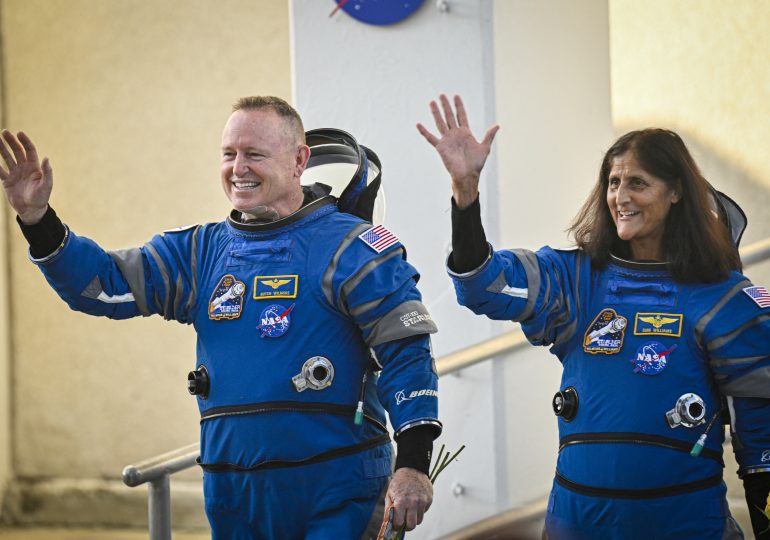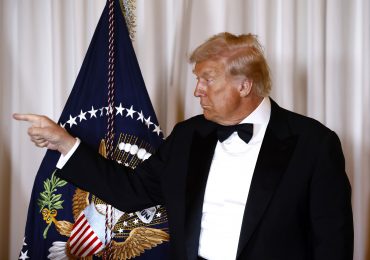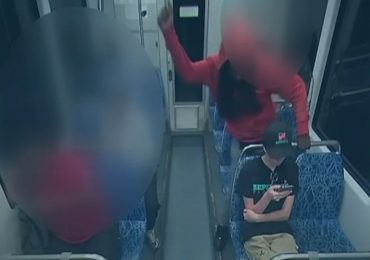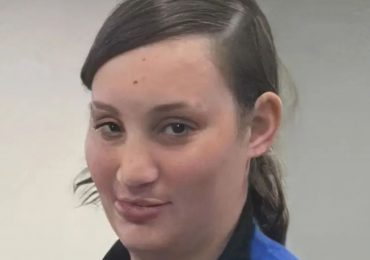The two NASA astronauts stuck aboard the International Space Station (ISS), Butch Wilmore and Suni Williams, won’t be coming home anytime soon. During a press conference at the Kennedy Space Center on Saturday, Aug. 24, NASA administrator Bill Nelson announced that the space agency was giving up on the idea of bringing Wilmore and Williams home aboard their balky Boeing Starliner spacecraft—which has been experiencing thruster problems since its launch on June 5. Instead, the Starliner will be flown home uncrewed, and Wilmore and Williams will hitch a ride back to Earth aboard a SpaceX Crew Dragon spacecraft, which will launch to the ISS in September for a five-month station stay, returning in February. This extends what was supposed to be an eight-day ISS rotation for Wilmore and Williams to a whopping eight months.
[time-brightcove not-tgx=”true”]
“NASA has worked very hard with Boeing to reach this decision,” Nelson said. “The decision is a result of a commitment to safety.”
The ruling rested on what NASA calls a flight readiness review (FRR). As agency brass explained at an Aug. 14 news conference, FRR’s are typically held before launch, when officials gather for a final go or no-go on the planned mission.
“We bring in representatives from all of the related centers, the technical authorities, the NASA engineering, and safety center flight operations,” explained Ken Bowersox, a former astronaut and an associate administrator for NASA’s space operations mission directorate. “We listen to the status of the mission, go through some special topics, and then we poll everybody at the end on whether or not they think we’re ready to undertake the mission.”
On one occasion, that panel’s decision led to disaster. The FRR for the final mission of the space shuttle Challenger was held on Jan. 15, 1986, and the ship was cleared to launch. Thirteen days later, on Jan. 28, that liftoff took place, ending in a fuel tank explosion and the death of all seven crew members just 73 seconds after the ship left the pad. That tragedy, followed by the breakup of the shuttle Columbia and a similar loss of all hands on Feb. 1, 2003, left NASA much more risk-averse than it had been before.
Read More: The Polaris Dawn Mission Opens a New Chapter in Private Space Flight
“We did not have the governance structure that we have today with technical authorities,” said Russ DeLoach, chief of NASA safety and mission assurance, during the earlier press conference. “So at that time, the program managers pretty much had near-unilateral decision making. And so if there were views that maybe a path we were taking was not correct, there was really no strong additional authority to step in and say, ‘Wait a minute.’”
That additional authority exists today, in the form of FRRs that take place mid-mission—though they often go by a different name: a mission risk acceptance forum. Whatever they’re called, the official panels are intended to bring the scrutiny of an FRR to bear at any point between the time a crew leaves the ground and the time they return to Earth. For the past several weeks, NASA has been under the gun to make such a decision about the hobbled Starliner—and to do it fast. The spacecraft’s batteries have a limited lifespan, and if the ship was not deemed fit to carry the crew home, it would have to fly back empty soon.
The FRR that resulted in the decision not to bring Wilmore and Williams home on the Boeing Starliner spacecraft was held on Aug. 23, and Nelson was very much in the loop. If there are dissenting opinions during the review, the decision goes first to Jim Free, NASA associate administrator. After him, Nelson could step in, and clearly he did.
Ahead of the decision being finalized, it was still possible that NASA could surprise the public—not to mention Wilmore and Williams—and announce that the stranded astronauts would be flying their dodgy Starliner home. But that was never likely. NASA’s institutional sorrow runs deep—back far before the Challenger and Columbia disasters, to the Jan. 27, 1967, launch pad fire that claimed the lives of astronauts Gus Grissom, Ed White, and Roger Chaffee, when they were conducting a dress rehearsal for the launch of their Apollo 1 spacecraft. Shortly after that tragedy, legendary flight director Gene Kranz gathered the grieving NASA staffers together for a grim but bracing post-mortem.
Read More: Fly Me to the Moon Is a Lighthearted Conspiracy Romp. But It Speaks to a Spiritual Sickness
“From this day forward, flight control will be known by two words: Tough and competent,” Kranz said, chalking the words on a blackboard. “Tough means we are forever accountable for what we do or what we fail to do. We will never again compromise our responsibilities. Competent means we will never take anything for granted. Mission Control will be perfect. When you leave this meeting today you will go to your office and the first thing you will do there is to write ‘tough and competent’ on your blackboards. It will never be erased. Each day when you enter the room, these words will remind you of the price paid by Grissom, White, and Chaffee. These words are the price of admission to the ranks of Mission Control.”
That price still stands. NASA could have decided to spare Boeing the embarrassment of flying their Starliner home empty, and Wilmore and Williams the ordeal of spending six more months in space, but that’s not the route the agency chose. Astronaut lives are on the line. A chastened NASA chose not to risk them again.
Leave a comment








